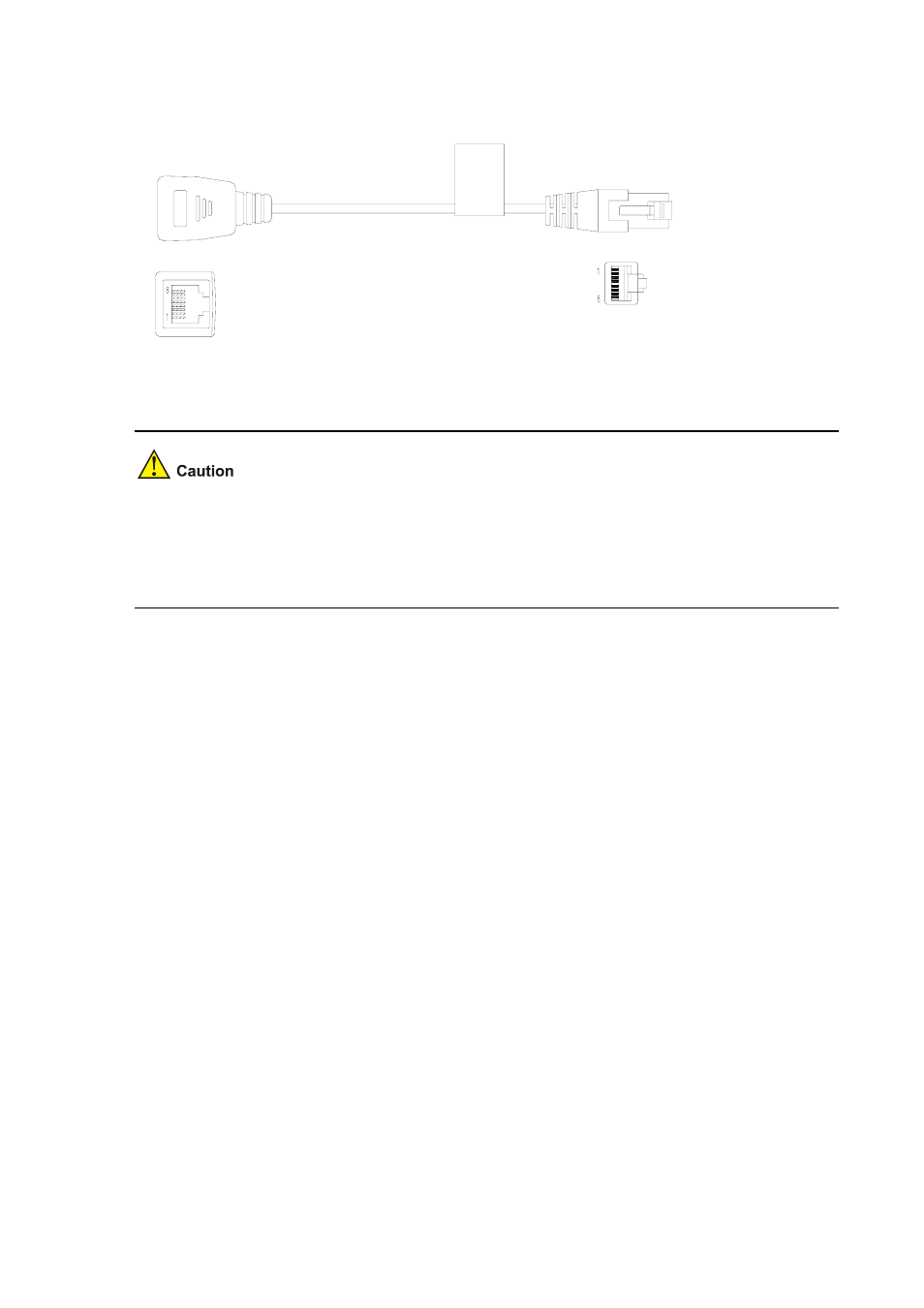Connecting the interface cable, Introduction – H3C Technologies H3C MSR 50 User Manual
Page 180

3-76
Figure 3-90 Crossover ISDN S/T cable
Connecting the interface cable
z
If outdoor cabling is involved, you need to install a special lightning arrester at the input end of the
ISDN BRI S/T interface cable to avoid lightning strike.
z
When connecting the interface cable, pay attention to the mark on the interface to avoid wrong
insertion, which may damage the interface module or even the router host.
Step1 Identify the operating mode of the BSV interface. If the interface is to be connected to an ISDN network,
it should operate in user mode; if the interface is to be connected to a TE device, such as a digital
phone or another BSV interface in user mode, the interface should operate in network mode.
Step2 Connect the cable.
2) To connect the module to an ISDN network, identify the type of the ISDN line provided by your
telecommunications service provider.
z
If it is an ISDN U interface line, use an NT1 for conversion. Insert one end of the S/T interface cable
into the S/T interface on the NT1 and the other end to a BSV interface on the
MIM-2BSV/MIM-4BSV.
z
If it is an ISDN S/T interface line, directly connect the cable to a BSV interface on the
MIM-2BSV/MIM-4BSV.
3) To connect the module to a TE device, use a crossover S/T interface cable. Connect the RJ-45
plug at one end of the cable to the MIM-2BSV/MIM-4BSV interface, the RJ-45 receptacle to the
straight-through S/T interface cable, and then the straight-through cable to the TE device.
MIM-2FXS/MIM-2FXO/MIM-2E&M and MIM-4FXS/MIM-4FXO/MIM-4E&M
Introduction
z
2/4-port voice subscriber circuit interface module (MIM-2FXS/MIM-4FXS) serves to access and
handle 2/4 channels of ordinary analog phone, fax, or AT0 loop trunk of telephone exchange.
z
2/4-port voice AT0 analog trunk interface module (MIM-2FXO/MIM-4FXO) serves to access and
handle 2/4 channels of common user lines of telephone exchange.
